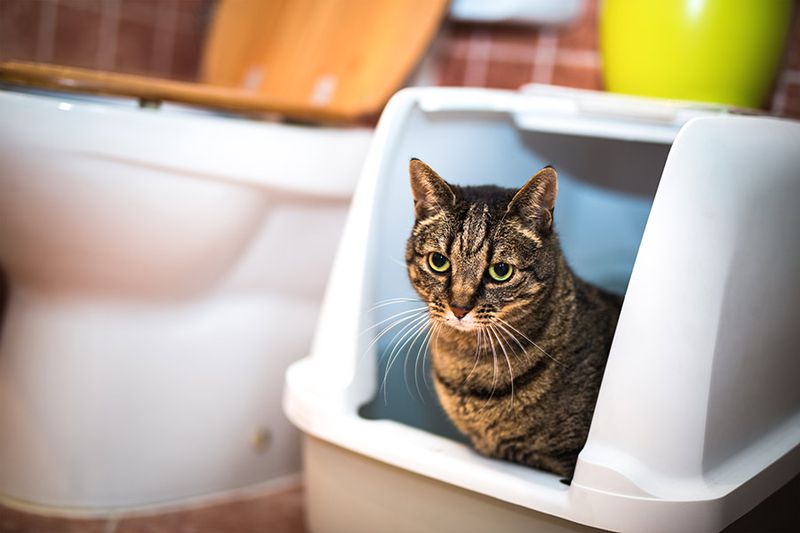Solving Litter Box Issues

Litter box placement and tidiness are key! As a general rule, have one litter box for each cat in your home, plus one (1 cat: 2 litter boxes, 2 cats: 3 litter boxes, and so on). Make sure the litter boxes big enough for the cat to enter and exit easily. Keep one box on each floor of your home and in different areas of the house. Place the litter boxes in a quiet, private area, away from their food and water. Keep the litter box clean by scooping once or twice a day. Dump the litter box weekly and clean with a mild dishwashing soap or enzymatic cleaner. Just as you wouldn’t want to use the bathroom in a dirty place, neither do your cats! Be consistent with the type of litter, texture and scent that your cat prefers and avoid changing their routine. Cats have a much stronger sense of smell than we do, so an unscented clumping litter is always a safe bet.
If your cat starts going to the bathroom in other locations, and you have been following the guidelines above, your cat may have a medical problem. Sporadic urination outside of the litter box is one of the most common signs of a urinary tract infection or other medical concern. These issues will only worsen without treatment, so take your cat to the vet as soon as possible!
If your cat does go to the bathroom outside the litter pan, thoroughly clean the area with an enzymatic cleaner that is specifically designed for cat urine. Block that area for a few days or place additional litter boxes in the areas of inappropriate elimination.
Older, arthritic or special needs cats may have trouble with certain types of litter boxes. High sided or top entry boxes might make it difficult for your cat to get into the litter box. Try switching to a lower box and make sure it’s easily accessible from your cat’s favorite spot.
Declawed cats sometimes have litter box issues as well. Please see the Cats: Scratching Solutions article to learn why this may be a problem.


